We figured, then, as we sit and wait for the final axe to fall on the Yellow Springs Turkey neck, what better time to take a spin through the division, perhaps snapshotting the situation as we see it, and even taking a peak into what 2042 might bring.
Let's start at the bottom and work up, shall we?
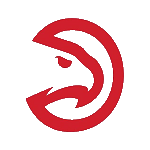
| Omaha | W | L | PCT | Pyth | Dif | Attendance |
|---|---|---|---|---|---|---|
| 2041 | 63 | 99 | .398 | 65-97 | -2 | 2,324,842 |
| 2040 | 90 | 72 | .556 | 87-95 | 3 | 3,204,560 |
The staff allowed 227 homers, 114 at home, 113 on the road. Their BABIP against was .318 at home, .302 away. The team as a whole, oddly, pitched 21 complete games. No other team in the Frick League threw more than 7. What does that tell you? I dunno, but Omaha starters registers 987 IP, a league high by a fairly high margin. Their 5.96 combined SP ERA is worse than anyone not Portland. So, bottom line, the team leaned heavily on its starters, and paid a price. Of course, their relief pitchers ERA was only a little better (5.78, 14th best in the league).
Offensively, the team led the Heartland with 287 HR (five Hawks hit more than 30 HR, and James Monger rang in at 28), but they were also last in the division when it comes to BB, batting average, and OBP, hence nearly last in the division in runs scored. And the fact is that even in this year of offensive leap, the Hawk’s home run total dropped from 311 to that 289. Bottom line, the offence walked more, but struck out a lot more, and homered less. Given that the Hawks don’t hit for average, that’s a big deal.
So, what does this mean going forward?
Add it all together, and you get that huge drop in wins, and an associated plunge in attendance—which means financially the Hawks are in a tad bit of a freefall. Except, of course, that the club’s media revenue is pretty solid right now, so while you can expect a budget drop, it shouldn’t debilitate the club. Look for 2042 to be a crossroads season for the franchise, though. Another clunker could lead to ugly results. On the positive side, though, the law of regression to mean suggests a reasonable bounce-back, and it does seem that there’s some cash gap in the salary cap. If I’m a betting man I think the Hawks will be back in the nest next year, but who the hell knows, right?
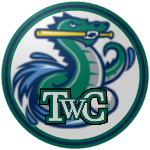
| TWC | W | L | PCT | Pyth | Dif | Attendance |
|---|---|---|---|---|---|---|
| 2041 | 68 | 94 | .420 | 67-95 | 1 | 2,424,236 |
| 2040 | 62 | 100 | .383 | 59-103 | 3 | 2,589,624 |
The financial line looks good, though. The club’s 60M payroll is low, and will almost certainly be made lower by conveniently forgetting to exercise Lloyd Braun’s $7M option. If Ray Cooper, for some reason, declines the $12m he’s owed for next year, things get outright spendy. On top of that, fans of the River Monsters seem to have bought the rebuild line that GM Scott Piccoli sold them, as buzz continues to be moderately strong. There is enough, it seems, to build on, and it also seems that if 2041 was when the ship began to turn a nudge, 2042 is when steam will be applied.
This is important, though, because, let’s face it, in 2041 the team was not particularly good. Yes, offensively they had a little power, and defensively they seemed mid-pack. But the pitching was bad, and perhaps most concerning was the regression that 23-year-old closer Dan Woodside experienced in dropping from a 3.98 ERA to a 5.09. His BABIP of .333 has got to be concerning on the one hand, and dismissed on the other. Could he really have gotten that unlucky? And, really is that a more distressing number than the kid’s walk rate that expanded from 2.7 to 3.4 per nine innings?
We don’t know. All we can say for sure is that if he bounces back, he should have a few pretty good arms around him in the bullpen come next year.
So things could get better, and better fairly quickly.
So, what does this mean going forward?
I’m cautiously optimistic for the River Monsters. I think we’ll see the wins increase, though I’m not sure it’s enough to get to .500. There is, of course, a lot of off-season to go, so the TWC folks to turn my head right around with a couple big moves. That seems a tad risky right now, but what do I know? I’m going to say the arrow is point up, though, and guess 73-75 wins in 2042, with a more serious presence in 2043.
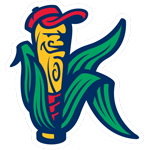
| Des Moines | W | L | PCT | Pyth | Dif | Attendance |
|---|---|---|---|---|---|---|
| 2041 | 77 | 85 | .475 | 71-91 | 6 | 3,831,755 |
| 2040 | 71 | 91 | .438 | 70-92 | 1 | 3,238,873 |
Part of the struggle might be defensively, where the Kernels were…well, not good. Which brings one to question the fate of one Alan Willamson, who’s offense is still valuable, but whose -11ZR at shortstop spells Doom with that capital D. He probably needs to play second base, but the Kernels have young star Jorge Aranda there. Of course, Aranda could, and maybe should play center field, but that leaves Craig White without a job unless you want to move him to LF, but then what do you do with Oscar De La Cruz—who is one of the team’s better young hitters.
It’s a quandary, for sure. Perhaps a trade is in order? Dunno. Maybe it gets better if the team declines Jorge Rodriguez’s team option, but the 37-year-old still seems to have some gas left in the tank.
Anyway, we’ve been talking for three paragraphs about the Kernels and have not mentioned Don Smith even once, which I think breaks our contract with the Journalists guild…so there it is. Perhaps the best news of all in 2041 was that Don Smith finally emerged as the guy we thought he would be. He went 13-6 with a 3.51 ERA and a FIP- of 71. Look at his work in mid-summer and you see the spark of Nebraska-ness glinting. It looks like his shoulder issue last year was just a little scare. At 187 innings, he wasn’t over-used (as some might have been tempted to do), and his PAP numbers were clean. Of nearly equal news, fellow kid starter Juan Garcia had a nice second season (13-7, 4.27), and looks like he’s really a #3 kind of guy who you can throw into the fray as a #2 if really needed. If Greg Palmer hadn’t gotten hurt, you’d almost be willing to get really excited about the team’s roll into Spring Training. That said, if Palmer is healthy to begin 2042, and especially if Timmy Karnes’ changeup clicks even a little, then the Kernels will be in an interesting spot when it comes to young pitching.
So, yeah. They won 77 games on a run differential that said they should only have won 71. I think that’s maybe good in these guy’s case because they also have a profile that looks like a lot of young teams: they got a lot better in August, September, and October, going 30-27 in those months.
In addition, the club has finally started getting their financial motor into gear. Ed took a dramatic move by cutting ticket prices to the bone, but in doing so put 3.8M people in the seats—converting those ticket sales into enough revenue that for the first time in many years, the Kernels will be working with a budget north of $95M and a fan interest in the mid-60s. With something between $12m and $20m of dumpable team options to work with, we could see another active free agency period that might well serve to bump that even higher during season ticket sales.
So, what does this mean going forward?
It’s hard not to be optimistic about where the Kernels are going, but at the same time you feel like it’s hard to bet against a history that has been unkind to the Kernels. This is a team that has not played .500 ball since 2031, and hasn’t been to the playoffs in three decades. In all seriousness, 2042 really should see them cross into winning baseball. If that happens, it’s possible to see them in the playoffs.
But we’re not advocating that Kernel fans hold their breaths for that.

| Madison | W | L | PCT | Pyth | Dif | Attendance |
|---|---|---|---|---|---|---|
| 2041 | 79 | 83 | .488 | 78-84 | 1 | 2,340,592 |
| 2040 | 75 | 87 | .463 | 75-87 | 0 | 2,377,353 |
Sure, you’d like a little more power in the mix, but what the heck. That’s what Free Agency is for.
And the fact is that the team should have a little money to throw around.
Sure, they’re still paying Mons Raider $15M. Sure, that hurts. But their established payroll drop from $80m to $60m in the off-season, and the fact is that they weren’t close to the cap anyway. Madison could have spent plenty more if they felt the need to this year, better yet next.
To be clear, though, the big issue may be revenue more than cap. At $111m in revenue this year, the Wolves will be struggling to keep their budget up where it was. It almost certainly won’t go up, anyway. And that’s going to be an issue—especially since if they are going to make big strides next year, the next step in acquiring pitching is going to have to happen. I mean, 22-year-old Yorikane Miyamoto (14-10, 4.81) was a godsend for Madison, but he threw 221 innings and was well over 100 pitches per outing in most of his appearances—at age 22. This is worrisome. The team NEEDS to find him some support. There are some guys here, but they are mostly bullpen folks. It would be quite helpful if Damon Tipping (who they got in the Raider thing) took that next step forward in Winter League or Spring Training. If Jaime Herrera’s change grows (another guy they got in the Raider thing), that would be extra fine.
An issue that is rarely brought up is that the team now plays in a 35,000 seat stadium—something that severely limits revenue growth relative to its competition (only Chicago and Boise are shackled with such tiny confines across the BBA). They played to 82% capacity this year. Assuming the club turns a corner and begins to actually compete for playoff spots, they are going to want the revenue stream that those extra seats can provide.
So, what does this mean going forward?
If there was a team that could use a lightning strike of development in their pitching, Madison is the squad. They had a solid season, and have a lot of the building blocks it needs to win. Unlike Twin Cities and (especially) Des Moines, they don’t have any elite level pitching in the pipeline. This, of course, has been the Madison bug-a-boo for some time, so that’s no great surprise. And, if it’s not obvious, I worry about cash flow and revenue generation. So this leaves me thinking that Madison’s near-term future looks a lot like their near-term past: a dangerous set of guys who can beat you if you’re not careful, but who will likely hang around .500 for another season or so while they work on moving a few more pieces around.
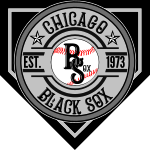
| Chicago | W | L | PCT | Pyth | Dif | Attendance |
|---|---|---|---|---|---|---|
| 2041 | 81 | 81 | .500 | 90-72 | -9 | 2,810,492 |
| 2040 | 76 | 86 | .469 | 81-81 | -5 | 2.721,818 |
Who the hell knows? I mean, that and a fruit basket will get you a good seat at Vinnie’s favorite Lakeside restaurant.
When you add it all up, the team’s strength was its starting pitching—which was arguably the best, second best, or third best in the Frick, depending on how you like to view the numbers. At issue from a PR point of view, however, was that the Sox stud didn’t come packaged like a Tchekanov or a Valle, but instead came packaged like a journeyman Pepe Jaramillo, a guy who most people couldn’t pick off the side of a milk carton. There was more here, though. Amayas Moelling is making his way to whatever greatness he’s going to find, and Juan Nicto remained a solid-but-not-flashy starter. Manuel Pena threw 170 really solid innings, and Luis Gonzales was nearly invisible while going 10-8 in 31 starts, and posting a 4.65 ERA that was, by definition, well above league average. Bottom line, the pitching staff allowed only 783 runs, third best in the league.
Still, the Black Sox managed only 81 wins.
To make matters worse, the offense, while a bit milquetoast at times, wasn’t pigshit putrid. The team was mid-pack at the end of the day, but made most of their hay through the base on balls. Twenty-year-old Hao Huang made his debut in right, and it was a good one. Same for 21-year-old Aarnoud Budding as a DH. Mark Simpson’s .448 OBP was startling in its own way, and he and Mark Wareham paired together to show it doesn’t matter how old you are as long as you can walk to first base. That said, Wareham’s days as a shortstop were probably over sometime around 2035. So there’s an issue, right? Rocky Wattson should wind up as a star at second base, though, and though people (and by people, I mean me) wanted to see more he turned in a fine enough year at 2.3 WAR.
So, what does this mean going forward?
So, really, what do you make of this mess, eh? If you’re Vic Celeca, what do you do? I mean, ultimately, you’ve got a nice little core assembled that by rights should have been a playoff contender. The club made some cash in 2041, which is good, but assuming Wareham opts in (and why wouldn’t he?) the team’s salary cap is going to be tight for the off season. One wonders if a few guys might be given the golden fruit basket to play elsewhere—which would eat into budget, but would possibly allow the addition of a bullpen guy or two, which might make some sense. The team is making rumbles about expanding the dump they play in, which is probably a good idea. 35,000 seats struggles to make revenue a team needs on the way up, and let’s make no bones about it, Chicago really should be on the way up.
Bottom line, it’s likely the off season will be fairly quiet in Chicago…or at least as quiet as an off season around Vinne can be. But overall, Chicago is a youngish team. Don’t be surprised to see them in the hunt come next October.
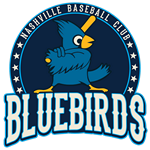
| NSH | W | L | PCT | Pyth | Dif | Attendance |
|---|---|---|---|---|---|---|
| 2041 | 90 | 72 | .556 | 89-73 | 1 | 3,373,787 |
| 2040 | 79 | 83 | .488 | 84-78 | -5 | 3.160,263 |
Looking at a roster constructed by Matt Rectenwald is an interesting thing. He’s an opportunist at heart, it seems. Pitching and defense? He can do that if its there. Thumpers? Yeah, sometimes. Mixes? Platoons? Slap-dash concoctions? Yes, yes, and yes. Ultimately, the commish’s magic sauce is about finding things that just make little bits better, and in this case, what he built was a sterling bullpen to support a quiet rotation of interesting, but not startling names, and an offense that all just kind of rowed in the same general direction.
Seriously, look at that rotation. Chin Kim, Josh Brown, Hao Ku, and Eru Likiliki. Add in Ta-heng Hor for bits of time as needed, throw in some fake water, and stir. And you get a set of guys almost no one would really covet, and yet they combined to go 48-42 by themselves and then deliver enough leads to the pen to keep things alive. And the pen was good. Bret Hugill, Francisco Barrera, and Bob Coleman combined to throw 125 innings of something around a 2.00ish ERA. Lorenzon de’Medici threw an effective (3.26 ERA) 77 innings. Kidane Ata was ugly good, meaning he had streaks. Bottom line, every bullpen Bluebird other than Ata threw ERAs better than league average. Classic Rectenwald. Patchwork, yes, but effective.
Offensively it was kind of the opposite. The Bluebird minors haven’t been particularly stocked, but what they’ve got has started to show up. The catching was done by a pair of 21 year-olds (Ramon Camacho, and Alberto Rodriguez[4 WAR]). The infield of 1B Ernesto Souza [3 WAR], 2B Jesus Yan [1.6 WAR], SS Francisco Otero [1.7 WAR], and 3B Tony Frost [1.4 WAR] was all 21 or younger—though platoons and other augmentation pieces were of the grizzled veteran type. The outfield was “older” in Gipper Kengos (25), Kidane Ata (24), William Wood (28), and Alonso Otero (24). So, yes, a 28 year old was the old guy.
Add it up and you see that, at present, there were no 6-7 WAR kind of superstars on the Bluebird offense, but there were a lot of guys who could hum a few bars ad fake it—and with that kind of youth around, its likely they’ll get better before they get worse.
So, what does this mean going forward?
The team has its finances in control, and it will have a little cap space to fiddle with. At question is whether the front office thinks that patchwork pitching staff is now too old—which we figure they will most definitely think. Josh Brown, at 31 might return and might not, for example.
At the root of how you see Nashville is probably how well you think the front office will be able to juggle the pitching staff. Everyone enjoys a feel-good teamwork story, but fans get more excited about reliability. That said, the Bluebirds made it to the 90-win mark last year. I don’t think they’ll see less than that in 2042.
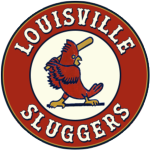
| LOU | W | L | PCT | Pyth | Dif | Attendance |
|---|---|---|---|---|---|---|
| 2041 | 93 | 69 | .574 | 93-69 | 0 | 3,772,439 |
| 2040 | 96 | 66 | .593 | 92-70 | -4 | 2,975,171 |
Pitching and injuries are the main story here.
At 21 years old, Amando Feliciano has now had two big injuries, including the labrum that sidelined him for a lot of this year. Armando Sanchez’s Tommy John surgery is threatening to turn him into a closer, or perhaps a big inning bullpen guy, and 20-year-old James Browning suffers a series of ailments that make doctors worried. Despite that horrible news, the team’s pitching was solid enough all year, and its young offense was sizzling enough, that the Sluggers were arguably the second best team in the Frick—though Vancouver fans will have a cow over that.
That said, the Sluggers rostered an offense that had only three guys over 25 years old, and one of those (Justin Jackson) came as a trade. 20-year-old Theo Bourges joined an outfield that already included Ronnie Hubbard and Semei Kwakou. Talk about instant ticket sales. The three of them combined for over 17 WAR. Holy hell, man. The infield wasn’t quite so scintillating, but 22-year-old 3B Rafael Gutierrez did his best to add to the pizazz.
And speaking of pizazz, one needs to paus to consider the Hulk that is Hugh Mangrouthhormone. I mean, the kid clubbed 46 homers and drove in 118 runs. Massive. I mean, massive, massive. But his .227/.256/.519 was hollow otherwise, and his WAR total was a -1.6. That’s right -1.6 WAR. So, yeah, is WAR broken or are HRs with nothing around them over-rated: discuss.
Bottom line, though, given that offense, and given their 93 wins, one does have to wonder what could have been without the injuries to Feliciano, Sanchez, and Browning. As it was, the team posted its record despite a 26-26 flat spot in June and July, and it finished the season with an 18-9 run. Pyth may say that 93 wins was right, but fans are clearly able to wonder what mighta coulda been.
So, what does this mean going forward?
Bottom line: the Louisville Sluggers won 93 games, which—as noted—their Pythagorean projections said they earned. If those pitching injuries don’t completely devastate the big three, they’ve got young pitching that will get better. They’ve clearly got young hitting that will get better. Financially, the Sluggers are flying again, though there are a few questions on the horizon when it comes to the big contracts they handed to Hector Amaral and Egbert Behner. (With a 6.20 ERA last year, one wonders at which point embarrassment might bring a retirement—though he’s got at least $35m reasons to stick around for a while longer.
To my read, the arrows point up, but there’s risk.
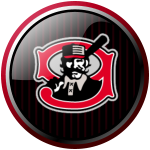
| YS9 | W | L | PCT | Pyth | Dif | Attendance |
|---|---|---|---|---|---|---|
| 2041 | 98 | 64 | .605 | 104-58 | -6 | 4,381,455 |
| 2040 | 110 | 52 | .679 | 102-60 | 8 | 4.420,047 |
In a lot of ways it was a classic Nine season. By this I mean that the offense didn’t lead any category at all (though this time the combination resulted in leading the Frick in runs scored), and the pitching staff led the league in strikeouts and bullpen ERA, and were strong enough everywhere else to result in allowing the fewest runs in the Frick. Add it up, and not surprisingly, the Nine are arguably the best team in the Frick League right now—a fact that bears witness to the fact that we’re sitting a day ahead of the day when we’ll see if the age-old Yellow Springs curse will result in the Nine being bounced from the Landis series for the third time in eleven years.
Financially, the club burned through cash, signing free agents and dropping a $50m bomb on a horribly failed Free Agent. We also signed closer Curt Phillips to a long term deal, then watched as he went into a two month death spiral that (knock on wood) he seems to be coming out of.
Anyway, blah, blah, blah.
Ultimately, 2041 saw the club round into shape and begin to take on the new persona that it’s arguably been searching for since the fateful 2037 season that saw so many free agents jump ship, Lucas McNeill sign his mega deal, and Jose Chavez begin to lose it. This is the year that the team became fully focused on a killer rotation, and a set of bullpen arms that will likely carry the club for the next half decade. Yes, Carlos Valle won the Nebraska last year and Ernesto Ramos won 20 games with Valle, but in all seriousness, this didn’t become a rotation-heavyweight until the addition of both scintillating lefty Carlos Pineda, and solid right-hander Tomas Ramirez. This slid a very solid Luis Colon down to the #5 slot, and created a rotation that the team hasn’t seen since the days of the Nasty Five (of which current pitching coach Alberto Sanchez, a one-time 20-game winner, was the #5).
Offensively, the team flew a classic Nine banner, too, with Dong-po Thum being the team’s primary superstar, and the rest of the bats quietly dropping their 1.5-4.0 WAR as they went on their merry way. Aging Hall of Famer to be, Lucas McNeill finished with 1.9 WAR, though he’s starting to be platooned a bit. Youngsters Ricardo Mendoza and Rex Foster dropped 2.6 WAR apiece in mostly platoon roles. Slick shortstop Luis Pena add 3 WAR. Veteran catcher Luis Barrera came in as a one-season stopgap, and dropped 3.6 WAR as a platoon, and rookie Roberto Viramontas chipped in 2.7 in a weird 1B/2B platoon kind of role.
There were problems, of course. We lost Luis Costello for big chunks of time, and RHB Jim Des Jardine seems to have played his way out of being a prospect. But such is life. Overall, things went pretty smoothly.
Ultimately, it says something when your depth/AAA players are two guys who won Gillstrom awards, and another ex-first round pick who could probably contribute to mid-level teams.
So, what does this mean going forward?
Right now it seems things are on a bit of auto-pilot. We went through our real emergency cycle in 2037-2039. If things stay on course, the Nine are probably due for another bout of insecurity in roughly 2044, give or take. If there’s a concern, it’s that the minor league pipelines could use some filling in a couple places—but we’ll be working on that. There’s also some angst around how to handle the end game of Lucas McNeill’s career. Right now, he’s still valuable, and depending on his interest in signing an extension for considerably less dollars, there is money around to make that happen. But the fact is that he’s kind of in the way right now...or will be soon. Robert Chenoweth will need a place to play, as will Javier Rodriguez.
Such is life. Hard decisions lurk.
Still, the bottom line is that the Nine front office essentially tries to pencil in 95 wins a season, and then lets the chips fall where they may. Barring injuries, we can see that process continuing for a little while, anyway.
